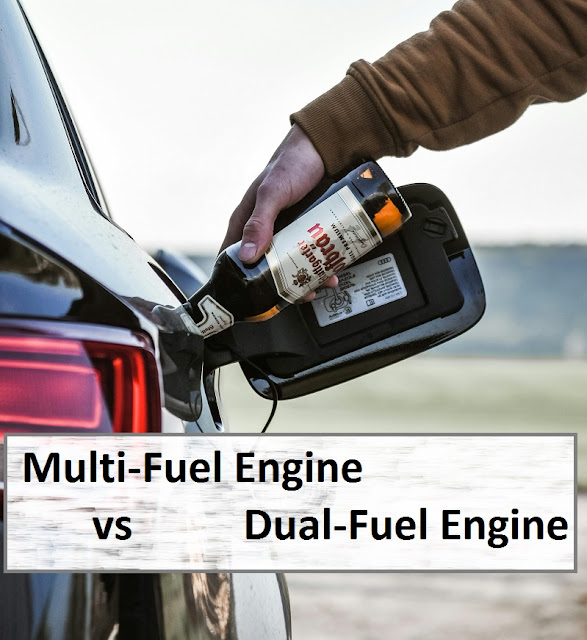While both multi-fuel and dual-fuel engines can operate on more than one type of fuel, they differ in design, operation, and applications.

| Feature | Multi-Fuel Engine | Dual-Fuel Engine |
|---|---|---|
| Fuel Types | Can run on multiple fuels (e.g., diesel, gasoline, kerosene, biodiesel, JP-8) | Uses two fuels simultaneously (e.g., diesel + natural gas, or diesel + propane) |
| Combustion Process | Adapts to one fuel at a time (may require manual switching or ECU adjustment) | Combines two fuels (e.g., diesel ignites natural gas) |
| Primary Use Case | Military, remote operations, fuel flexibility | Efficiency & emissions reduction (e.g., trucks, ships, power gensets) |
| Ignition System | Compression ignition (diesel-based) or spark ignition (gasoline-based) | Typically compression ignition (diesel pilot ignition for gaseous fuel) |
| Complexity | Moderate (must handle different fuel properties) | High (requires precise fuel blending & control) |
| Efficiency | May lose efficiency when switching fuels | Often more efficient than pure diesel or gasoline |
| Emissions | Depends on fuel used | Lower emissions (especially with natural gas) |
| Examples | Military Humvees, NATO trucks | LNG-diesel ships, CNG-diesel trucks |
When to Use Which?
Multi-Fuel Engines → Best for military, emergency, or off-grid applications where fuel availability is unpredictable.
Dual-Fuel Engines → Ideal for commercial transport, shipping, and power generation where cleaner burning and cost savings are priorities.

Post a Comment